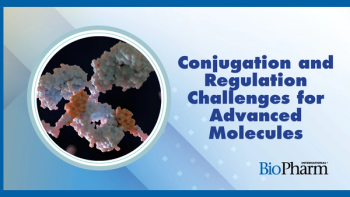
- BioPharm International-12-01-2009
- Volume 22
- Issue 12
The Promise and Perils of Vaccines
Vaccine research and development is surging, but continues to face manufacturing and regulatory challenges.
The vaccine business is booming, spurred by worldwide efforts to halt the AIDS epidemic and to contain the global influenza pandemic. Government agencies have rushed to place orders for millions of H1N1 flu vaccine doses, prompting manufacturers to ramp up production along with investment in R&D. Public–private partnerships, many funded by the Bill & Melinda Gates Foundation, are developing vaccines to counter infectious diseases that kill or disable millions of people in third-world nations. Since 2000, the global vaccine market has almost tripled to reach more than $17 billion (2008) and is projected to top $20 billion by 2012. Yet, delays in producing the millions of doses needed to prevent a worldwide influenza pandemic this winter raised questions about continued reliance on decades-old production methods and on private-sector manufacturers.
Jill Wechsler
ROBUST PIPELINE
The good news is that a record 120 vaccines now are available to meet the health needs of people all over the world, and a significant number of vaccine candidates are moving through the research pipeline. Over 80 new products are in late-stage clinical testing, including some 30 that target untreated diseases, according to the "State of the World's Vaccines and Immunization" report released in October by the World Health Organization (WHO) and UNICEF. The surge in vaccine R&D over the past decade has produced new vaccines for meningococcal meningitis, rotavirus diarrheal disease, pneumococcal disease, and cervical cancer caused by human papillomavirus (HPV). The PATH Malaria Vaccine Initiative recently announced Phase 3 trials for a promising, but only partially effective, anti-malarial vaccine developed by GlaxoSmithKline (GSK), plus plans to continue the search for a more effective, four-year preventive. Merck has linked up with Britain's Wellcome Trust to develop more affordable and heat-stable vaccines for third-world countries.
There's also progress on the HIV/AIDS vaccine front, despite initial reports that over-hyped the benefits of an AIDS vaccine being tested in Thailand. Analysis of data indicated a low infection rate among 16,000 participants; the results were inconclusive, but generated optimism that they may provide insight that will lead to a preventive against AIDS infection.
The increasingly healthy vaccine business is attracting more Big Pharma investment. Johnson & Johnson has linked up with Crucell NV of Holland to jointly develop vaccines. Abbott Laboratories is buying Solvay's vaccine and drug business, and Pfizer's acquisition of Wyeth makes it a lead player in the field. Sanofi-Aventis CEO Chris Viehbacher recently announced plans to double the company's vaccine business over five years. These companies may be interested in products like the anti-smoking vaccine NicVAX being developed by Nabi BioPharmaceuticals with support from the National Institute on Drug Abuse. Moreover, the search for cancer vaccines is going strong, supported by the FDA draft guidance on how to conduct clinical trials to test new vaccines to treat cancer.
Although much of the growth in vaccine sales reflects purchases of newer, more costly products in western countries, the market expansion also supports higher immunization rates around the world. A record 106 million children were administered the traditional roster of childhood vaccines in 2008, according to the WHO report. Global immunization has reached 82%, up from only 20% coverage in 1980. But international health officials warn against complacency. They note that about 24 million children still do not receive routine vaccines, a shortfall that would cost just $1 billion more a year to address. The Global Alliance for Vaccines and Immunization strives to fill the gaps, currently with a campaign to immunize 130 million children against pneumonia with Hib and pneumococcal vaccines.
PANDEMIC SHORTAGE
Amidst all this progress, the initial H1N1 vaccine shortage in October brought home the perils involved in vaccine development and production. Last July, US government officials predicted that vaccine makers would produce 80–120 million doses by mid-October, and public health agencies ramped up for a major vaccination drive. Government leaders and vaccine producers suffered a sharp loss of credibility when it appeared that only 16 million doses would be available early in the fall. Health and Human Services (HHS) secretary Kathleen Sebelius said she relied on industry predictions that turned out to be wildly overoptimistic, while manufacturers claimed they kept health officials informed of technical problems and anticipated delays at every step in the production process.
The crisis prompted broad re-examination of vaccine manufacturing and product formulation. One culprit is the continued reliance of US manufacturers on chicken eggs to grow the influenza vaccine. The process took longer than expected with the H1N1 vaccine, and the yield was much lower than with seasonal flu vaccine, a problem not quickly recognized because of difficulties developing a suitable potency test for the new product.
Vaccine supplies don't go so far in the US, moreover, because of the high demand for single-dose syringes that avoid use of the preservative thimerosal. Multidose vials can be filled and distributed more efficiently, but unfounded fears about side effects from mercury-containing vaccines forces producers to supply thimerosal-free products. AstraZeneca's MedImmune was able to produce ample supplies of its nasal-spray flu vaccine, but was limited by shortages of nasal dispensers. US health officials also pressed for a one-dose vaccine, which requires a high-strength product.
European manufacturers overcame some of these problems by authorizing vaccines with adjuvants that require less antigen for each dose. Novartis and GSK have licensed pandemic flu vaccines with adjuvant in the EU, but these products still are being tested in the US. Former FDA official Scott Gottlieb, now with the American Enterprise Institute, would like the FDA to do more to make adjuvants more readily available as components for new vaccines and to spur development of new assays that can better detect impurities in vaccine batches and speed up the release of final products.
SPURRING INNOVATION
However the pandemic plays out, it is spurring more investment in vaccine manufacturing, testing, and regulatory initiatives. Novartis has received considerable government funding to establish a new facility to grow a flu vaccine in animal cells. Several small biotech firms such as Protein Sciences, Novavax, and FluGen are developing flu vaccines that use cell-based production systems.
The need to quickly develop and produce a vaccine to meet global health needs also is focusing attention on the vaccine regulatory process in the US and abroad. Although FDA officials garnered praise for being proactive in streamlining testing and data requirements for H1N1 vaccine candidates, vaccine makers would like to see a more coordinated international approval process. The WHO vaccine prequalification process takes approximately 18 months, in addition to all the work involved in licensing a product with the FDA or European authorities.
FDA officials are taking steps to encourage industry development of vaccines to counter global infectious diseases. The guidance issued in 2008 explains regulatory processes that can speed up the review of important treatments and clarifies that the FDA can and will license vaccines for use outside the US. The FDA recently was designated a WHO "reference" national regulatory authority, which enables it to facilitate WHO prequalification of vaccines for distribution to developing countries by United Nations agencies.
In this capacity, the Center for Biologics Evaluation and Research (CBER) can help manufacturers develop and license vaccines to protect against infectious diseases, including those not endemic in the US, explained CBER Acting Director Karen Midthun at a November conference on global vaccine development sponsored by the Drug Information Association. The FDA is working with the WHO to help build regulatory capacity in developing countries and participates in a number of advisory committees on vaccine development and safety, noted Marion Gruber, deputy director of the CBER's Office of Vaccines Research and Review. The agency further supports vaccine development by providing advice to manufacturers and regulatory authorities on assay validation, clinical trial design, statistical issues, and manufacturing challenges.
Jill Wechsler is BioPharm International's Washington editor, Chevy Chase, MD, 301.656.4634,
Articles in this issue
about 16 years ago
BioPharm International, December 2009 (PDF)about 16 years ago
CDMOs Benefit from the Growing Biologics Marketabout 16 years ago
Disposables in Rapid Response Manufacturing: The Next Stepsabout 16 years ago
Quality by Design for Biotechnology Products—Part 2about 16 years ago
Licensing of Expression Systemsabout 16 years ago
Speeding Up Slowlyabout 16 years ago
Freeze-Thaw Performance and Robustness Assessment of Celsius FFT 6Labout 16 years ago
Faking ItNewsletter
Stay at the forefront of biopharmaceutical innovation—subscribe to BioPharm International for expert insights on drug development, manufacturing, compliance, and more.




